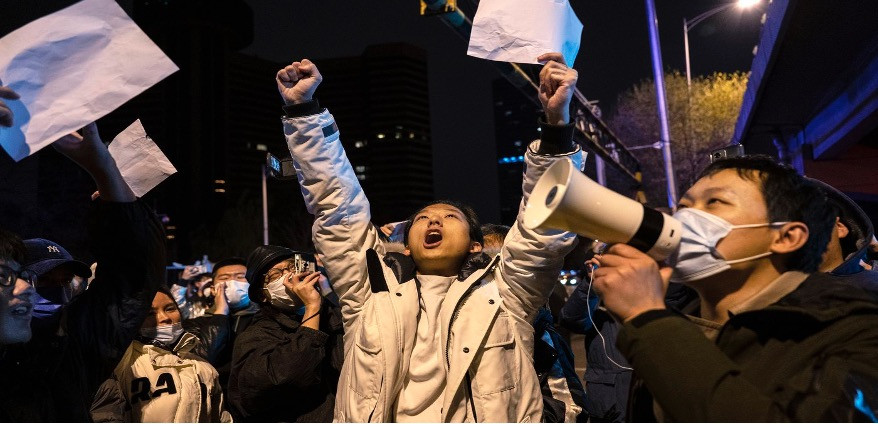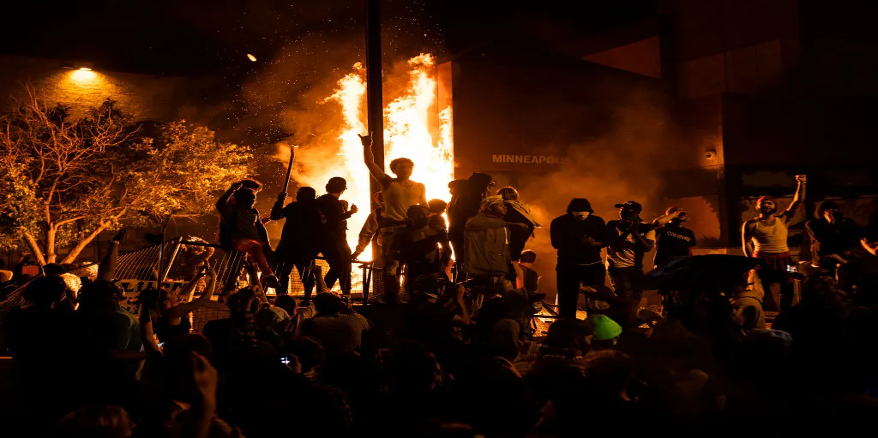The early excitement around China’s reopening appears to be fading. Only three weeks after the most significant easing measures were announced, skyrocketing covid cases are bringing back lockdowns. The pot is boiling over.
Rare demonstrations erupted in several major cities, with people chanting “We don’t want covid tests; we want freedom.” In Guangzhou and Chongqing, protesters and police engaged in violent altercations, while large groups in Beijing and Shanghai even called on President Xi to resign.
Fearful of being locked up again for months inside their homes, panicked residents have scrambled to stock up on food and medicine. Schools in Beijing are resuming online learning, while most public venues like cinemas and shopping malls are shuttered. Lockdowns are now in place in cities that generate about a quarter of China’s GDP, according to Nomura.
The restrictions’ adverse economic effects conspire with an ailing property sector, extremely high private-debt levels, and a working-age population about to contract sharply. Youth unemployment is nearly 20 percent—a record.

Source: Vox
Getting things back to normal may take a while. What are the genuine signs of reopening and what is noise? Putting the weak economy, surging infection rates and public demonstrations to the side, we pay attention to the market. In the words of Lao Tzu, “Take the time to listen to what is said without words.”
Despite anti-lockdown protests and record infections, which exceed the previous peak in mid-April when Shanghai was under full lockdown, China’s benchmark CSI300 index has held steady and risen 2.4 percent since November 21. Related assets are holding up well. The price of iron ore and copper have been flat-to-up over the past ten days, while aluminum prices have fallen a mere 1 percent.
Amid a flood of unfavorable news reports, we draw a parallel between these positive signals from China-related assets and those issuing from US markets during the turbulent summer of 2020.
Covid cases in the US increased tenfold from twenty-thousand instances in June 2020 to over two hundred thousand cases per day in December 2020. Civil unrest also exploded. After George Floyd’s killing by a police officer in Minneapolis in May of that year, protesters took to the streets in cities across the US chanting “Black Lives Matter!” The demonstrations lasted through the summer and at times devolved into riots that featured looting, violence, and destruction.

Source: Politico
What was the stock market’s reaction? Between June 1 and year’s end, the S&P 500 rose by 50 percent. The market spiked above the pre-pandemic peak just as infections were soaring, the economy was still shaky, and social unrest was abnormally high. The unemployment rate averaged 8 percent over the period.
We believe an analogous situation is taking hold in China. The conflict between Beijing’s two mandates—preventing covid outbreaks and stabilizing the economy—is intensifying. Though the severity and duration of the outbreak remains unclear, the market is discerning the future: the pivot to growth has begun, and authorities will take steps towards living with covid.
To capitalize, investors should consider buying Chinese stocks and shorting the dollar versus Asian currencies like the Korean won and the Taiwanese dollar. By the time of the Formula 1 Grand Prix in Shanghai on April 16, China plays will be considerably higher.







